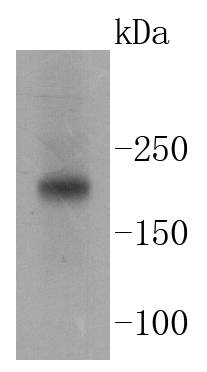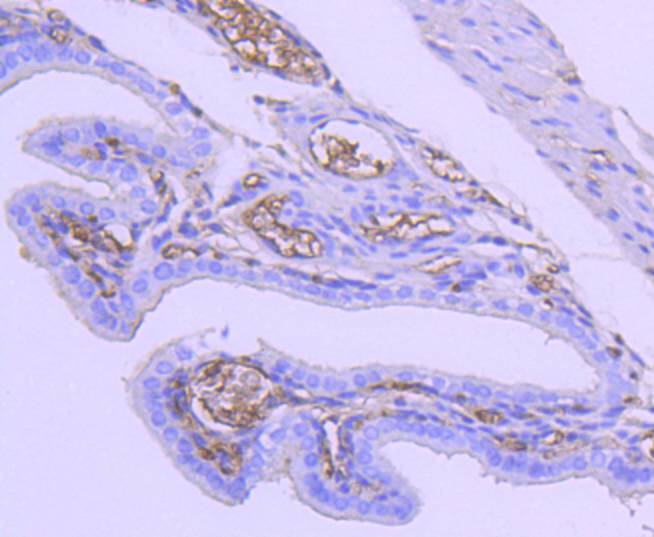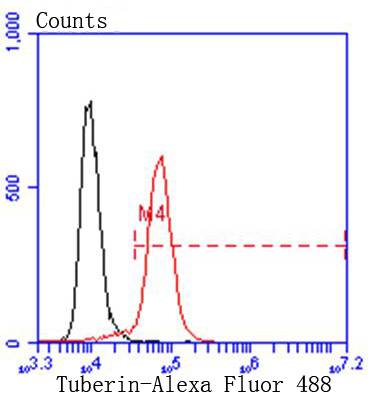Product Detail
Product NameTuberin Rabbit mAb
Clone No.SC05-59
Host SpeciesRecombinant Rabbit
Clonality Monoclonal
PurificationProA affinity purified
ApplicationsWB, IHC, FC
Species ReactivityHu, Ms, Rt
Immunogen Descrecombinant protein
ConjugateUnconjugated
Other NamesFLJ43106 antibody
LAM antibody
OTTHUMP00000158940 antibody
OTTHUMP00000198394 antibody
OTTHUMP00000198395 antibody
PPP1R160 antibody
Protein phosphatase 1, regulatory subunit 160 antibody
tsc2 antibody
TSC2_HUMAN antibody
TSC4 antibody
TSC4 gene, formerly antibody
TSC4, formerly antibody
Tuberin antibody
Tuberous sclerosis 2 antibody
Tuberous sclerosis 2 protein antibody
Tuberous sclerosis 2 protein homolog antibody
Accession NoSwiss-Prot#:P49815
Uniprot
P49815
Gene ID
7249;
Calculated MW200 kDa
Formulation1*TBS (pH7.4), 1%BSA, 40%Glycerol. Preservative: 0.05% Sodium Azide.
StorageStore at -20˚C
Application Details
WB: 1:1,000-1:2,000
IHC:1:50-1:200
FC: 1:50-1:100
Western blot analysis of Tuberin on Jurkat cell lysates using anti-Tuberin antibody at 1/1,000 dilution.
Immunohistochemical analysis of paraffin-embedded mouse placenta tissue using anti-Tuberin antibody. Counter stained with hematoxylin.
Flow cytometric analysis of Hela cells with Tuberin antibody at 1/50 dilution (red) compared with an unlabelled control (cells without incubation with primary antibody; black). Alexa Fluor 488-conjugated goat anti rabbit IgG was used as the secondary antibody.
Tuberous sclerosis complex (TSC) is an autosomal dominant genetic disorder characterized by mental retardation and the widespread development of distinctive tumors termed hamartomas. Two different genetic loci have been linked to TSC; one of these loci, the tuberous sclerosis-2 gene (TSC2), encodes a protein called tuberin and the other loci, tuberous sclerosis-1 gene (TSC1), encodes a protein called hamartin. Tuberin and hamartin interact with each other forming a cystoplasmic complex. Hamartin interacts with the ezrin-radixin-moesin (ERM) family of actin-binding proteins and inhibition of hamartin activity results in loss of cell adhesion. Hamartin is present in most adult tissues with strong expression in brain, heart, and kidney.
If you have published an article using product 48921, please notify us so that we can cite your literature.





 Yes
Yes



